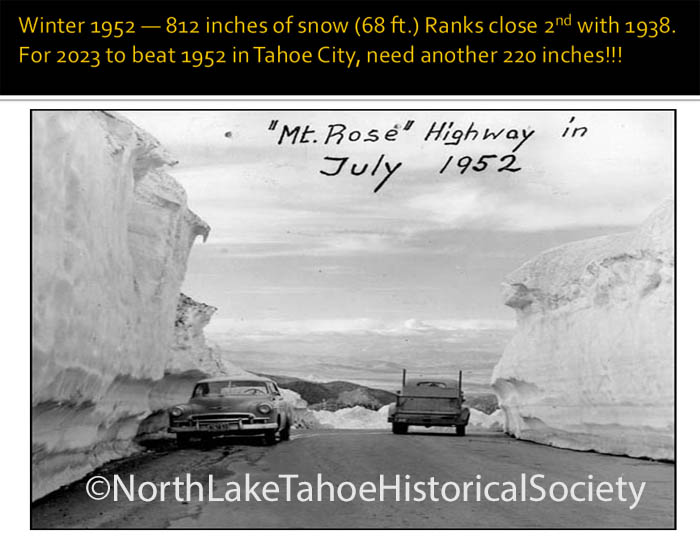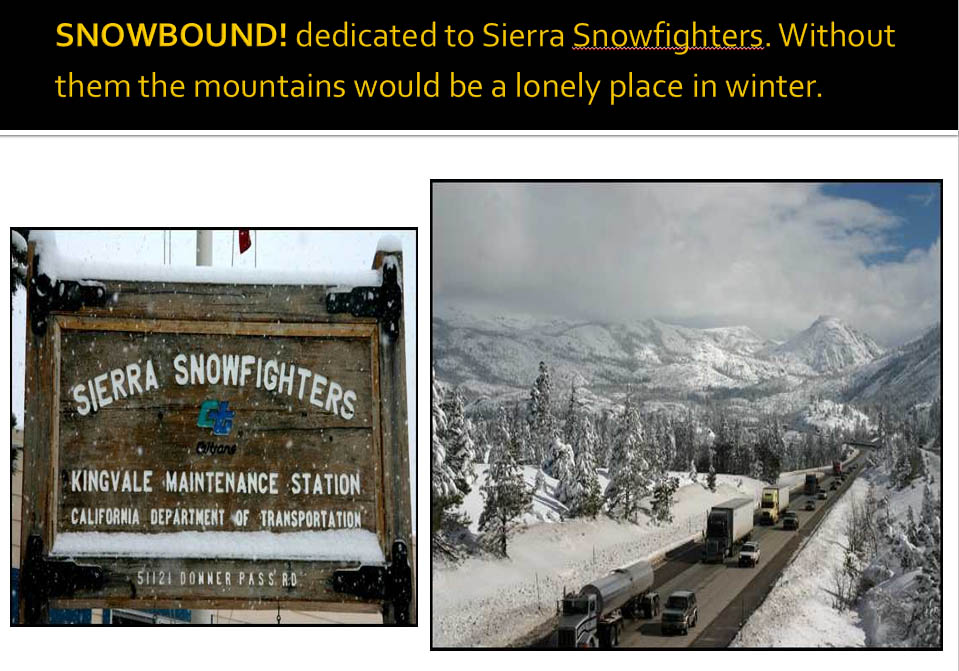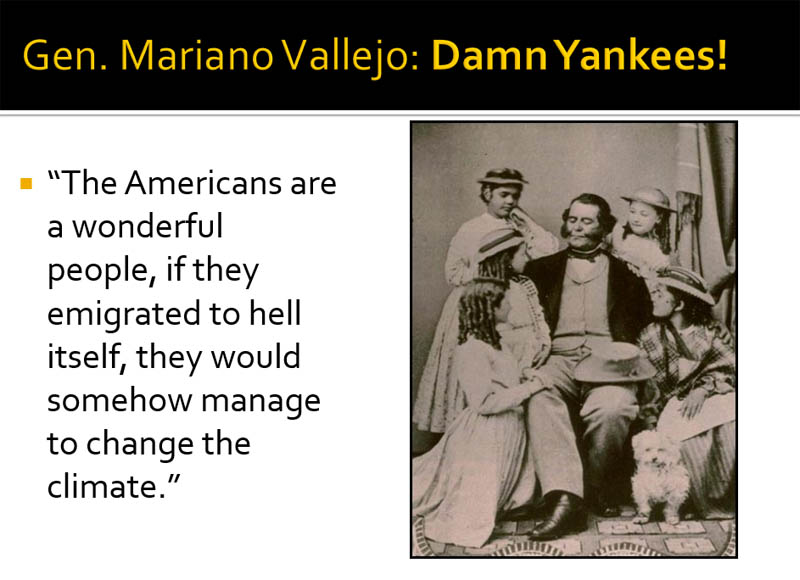Now that the snow has settled from the monster winter of 2023, it’s time that we dismiss the sensational headlines and understand that it was not the record season for snow and water in the Tahoe Sierra that the media would have you believe. References to “record snow/precipitation” continue even though data indicate otherwise.
That’s not to say it wasn’t an epic season in California. Officially, 2023 ranks 5th for snowfall at Central Sierra Snow Laboratory near Donner Pass (since 1880), and 5th for snow and 3rd for cold at Tahoe City where weather bureau measurements began in 1909, the longest dataset in the Tahoe Basin.
NOAA does not use snowfall data from ski areas in its official tallies, but in the Sierra high country incessant atmospheric rivers coupled with consistent below normal temperatures in 2023 translated into seemingly endless powder dumps.
A few California ski resorts set new maximum snowfall records for their locations, including Palisades Tahoe (Squaw Valley) with 723 inches at 8,000 feet elevation. Mammoth Mountain in the southern Sierra blew past its old record with 885 inches (74 feet). Mammoth is still open with top to bottom skiing so get out there if you still need more runs in your quiver.
In the Great Basin, at least 8 Utah resorts set new maximum snowfall totals. Alta Ski Area set a record with 903 inches (75 feet) by the time it closed at the end of April 2023. The region is famous for its light fluffy snow, but for those who got a taste of the bottomless “cold smoke powder” this winter will be bragging about for years to come. Utah hydrologists tallied 30 inches of snow water equivalent (SWE) in the snowpack statewide, also a record.
In April 2023 I created a Power Point presentation for a client that briefly analyzes last winter’s impact in the Tahoe Sierra and its historical ranking for snow and precipitation. (Precipitation is the combination of rain and water equivalent of snow.) I extracted about 10 slides to illustrate this Tahoe Nugget.





The Northern Sierra is the most important region in California for water storage captured from runoff draining the normally wet watershed north of Highway 50 to Mount Shasta. The Northern Sierra 8-Station Index was established in 1922 to provide hydrologists with vital, real-time data regarding precipitation values throughout this vast region. Note that the precipitation value for 2023 is well shy of the top water years.

Tahoe City’s 316 inches (26.3 ft.) of snowfall in 2023 was good enough for 5th place, but needs another 220 inches ((18.3 ft.) to overtake the 1st place winter of 1952! Check out the July 1952 snowpack below.


I’ve used this slide for years. General Mariano Vallejo was an important Californio and ally of the United States in the Mexican American War (1846-48). Despite the fact that the Americans arrested and confined him to prison for no good reason. Vallejo is not talking about climate change in the modern sense, he’s commending the Americans for their industry and can-do spirit.


Follow Mark McLaughlin on Facebook
Read my bi-weekly column in Tahoe Weekly magazine.









 The 8-Station Index represents precipitation values for the Northern Sierra. The 28.4 inches received since October 1 is more than 50% of what the region averages in a year. In many locations the month of October was the wettest of record. One storm alone added 11 billion gallons to Lake Tahoe, raising it 3 inches. Despite the boost, Big Blue still remained more than 2 inches below its natural rim. The current pace of precipitation is better than the beginning of Winter 2011, which ultimately ranked in the Top 10 as No. 8 wettest since 1871.
The 8-Station Index represents precipitation values for the Northern Sierra. The 28.4 inches received since October 1 is more than 50% of what the region averages in a year. In many locations the month of October was the wettest of record. One storm alone added 11 billion gallons to Lake Tahoe, raising it 3 inches. Despite the boost, Big Blue still remained more than 2 inches below its natural rim. The current pace of precipitation is better than the beginning of Winter 2011, which ultimately ranked in the Top 10 as No. 8 wettest since 1871. One Atmospheric River in October dumped more than a foot of water on Alpine Meadows ski resort. The most recent AR this past week delivered nearly 6 inches of rain in 24 hours. Snow levels in mild AR events are often quite high, sometimes between 8,000 to 9,000 feet in elevation. With a summit near 11,000 feet, Mammoth Mountain Resort near Yosemite was slammed with nearly 5 feet of snow on Dec. 16. The State record is 68 inches in 24 hours. Compare that with Tahoe's relatively low numbers for this same event. Tahoe resorts currently boast upper mountain bases ranging from 3 to 4 feet. Mammoth Mountain's snowpack is already 11 feet deep up top.
One Atmospheric River in October dumped more than a foot of water on Alpine Meadows ski resort. The most recent AR this past week delivered nearly 6 inches of rain in 24 hours. Snow levels in mild AR events are often quite high, sometimes between 8,000 to 9,000 feet in elevation. With a summit near 11,000 feet, Mammoth Mountain Resort near Yosemite was slammed with nearly 5 feet of snow on Dec. 16. The State record is 68 inches in 24 hours. Compare that with Tahoe's relatively low numbers for this same event. Tahoe resorts currently boast upper mountain bases ranging from 3 to 4 feet. Mammoth Mountain's snowpack is already 11 feet deep up top. 









